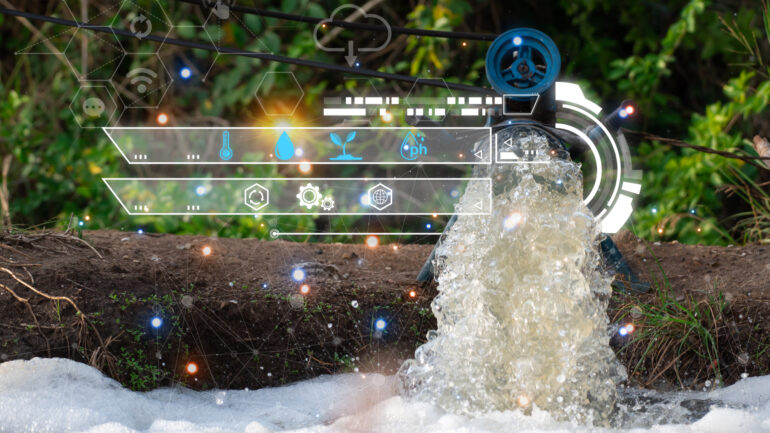Paradox of Progress – The Interplay between Water, Watts & Algorithms

Google’s hyperscale data centres, which underpin its Cloud services and essential products like Gmail, Google Drive, and YouTube, have utilized an average of 550,000 gallons (2.1 million litres) of water each day over the past year. This equates to around 200 million gallons (760 million litres) annually. In comparison, OpenAI’s ChatGPT requires 500 ml of water for every 5 to 50 prompts it processes, wrote Shaolei Ren, a researcher at the University of California, Riverside, who primarily focuseson the interplay between AI and sustainability, and has done groundbreaking work especially on water sustainability.
Ren’s research revealed that Microsoft’s global water usage surged to 34 per cent from 2021 to 2022 (to nearly 1.7 billion gallons). It is due to heavy investment in Artificial Intelligence (AI) and partnership with OpenAI. He stated, “It’s fair to say the majority of the growth is due to AI.” For technology companies’ water has become the new oil as massive volumes of it are required to cool the data centres processing our insatiable demand for data.
India’s Contradiction
In the world of data centres, India presents are interesting case.The country currently ranks 13th in the world in terms of total number of data centres, with 138 currently in operation. 45 more are on the way, according to the Indian Ministry of Electronic & Information Technology (MeitY), set to cover 13 million square feet with 1,015 MW of capacity by the end of 2025. The India data centre market size reached US$5.0 Billion in 2024. Looking forward, IMARC Group expects the market to reach US$12.9 Billion by 2033 – a growth rate (CAGR) of 10.43% during 2025-2033.
The crux of the issue, for India, will be finding answers to the paradox of meeting the country’s growing need for data centres, keeping those cool in a sustainable way without risking the water needs of millions. Per the Stockholm International Water Institute India is home to 17% of the global population but only 4% of its water resources. Nearly 820 million Indians face high to extreme water stress and 200,000 Indians die every year due to inadequate water, sanitation and hygiene. Every summer, India’s technology hubs of Bangalore and Hyderabad face severe water crisis. The central government has warned that most borewells in Bangalore have been overexploited and have gone dry.
India has approximately 40 million borewells and open wells, extracting 250 to 260 cubic kilometres of groundwater annually – more than the combined total of the USA and China. Groundwater supplies 80% of the country’s drinking water and meets two-thirds of irrigation needs. However, a 2023 report from UN Water warns that India is on the verge of a critical groundwater depletion point. The northern regions are particularly affected, having lost 95% of their groundwater between 2002 and 2022, as indicated by a study in the journal One Earth. The study suggests that even substantial future rainfall may not be enough to reverse this level of depletion.
The Water-Energy Nexus
Energy plays as much a critical role in data centres as does water – in fact the two resources are intertwined. The water-energy nexusis crucial for cloud infrastructure, yet energy consumption analyses in data centres often overlook water needs. In 2020, US data centres were projected to consume about 73 Terawatt Hour (TWh) of energy, equivalent to the energy used by nearly seven million homes. The COVID-19 pandemic increased internet services by 40-80%, with video conferencing usage soaring by 250%.
Affordable energy has always been a key focus for businesses. Similar to how companies once situated refineries near ports and factories close to coal mines, AI firms are now seeking locations with reliable, low-cost electricity. The choice of location is crucial. In data centres, about half of energy expenses are attributed to cooling systems and air conditioning needed to prevent servers from overheating. As a result, cooler climates and coastal regions are likely to become increasingly attractive for potential sites.
A Geopolitical Conundrum
By 2025, major technology companies will be on a global quest for energy in various forms – kilowatts, megawatts, and gigawatts. This dynamic interplay between water, energy and technology is reshaping global influence in a manner reminiscent of the oil booms of the past, albeit in a less visible way. Instead of pipelines and tankers, the new geopolitical battleground consists of unassuming warehouses filled with humming servers. The extent to which this shift will alter global power dynamics remains uncertain. While the most significant AI research will likely continue to occur in established hubs such as San Francisco, London, Beijing, and Paris, the data centres that deploy these algorithms will operate on thin margins, focused on volume rather than innovation.
The concept of “electro-diplomacy” will be a crucial aspect of international relations in the coming years, as scaling AI becomes less about algorithms and more about energy infrastructure. However, nations that are currently benefiting from this moment should tread carefully; their advantages may be short-lived as dominant economies develop strategies to produce cheap, clean energy in sufficient quantities to encourage domestic data hosting.The paradox of progress lies in the delicate balance between harnessing energy for technological advancement while ensuring that such growth does not compromise environmental sustainability and long-term viability.
Acknowledgement:
- www.wired.com
- https://dgtlinfra.com/
- en.wikipedia.org
- www.businesstoday.in
- www.theweek.in


